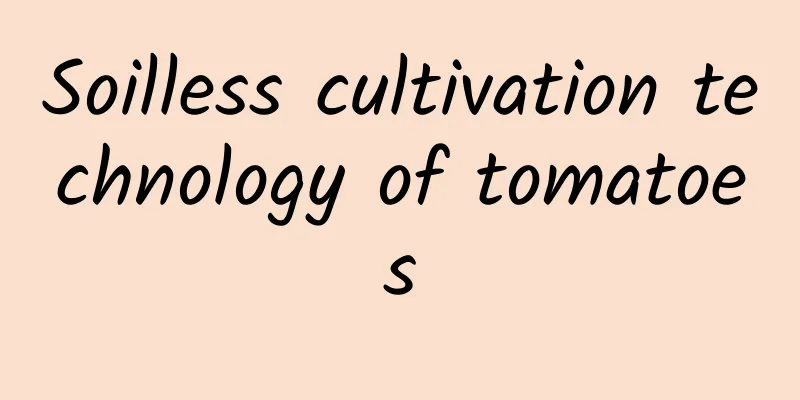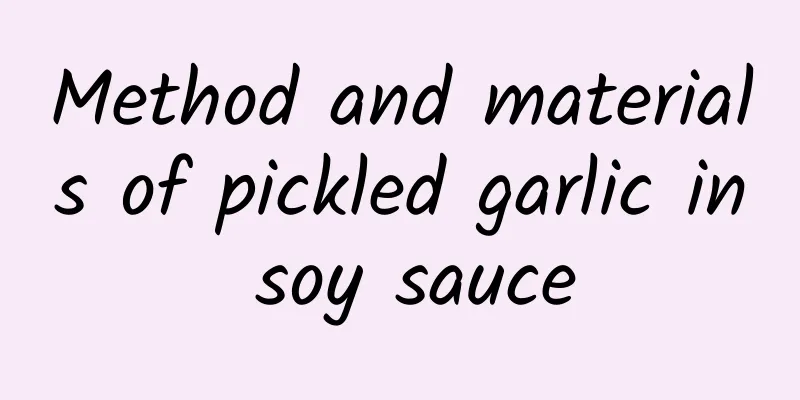Soilless cultivation technology of tomatoes

|
If you grow tomatoes, how should you grow them without soil? Today I will tell you about the soilless cultivation technology of tomatoes: 1. Tomato variety selectionAll varieties used in soil cultivation can be used in soilless cultivation. However, due to the high investment in soilless cultivation, varieties with good fruit quality, high yield and good benefits should generally be selected. , Jiayuan Dafen, Shennong Dafen, Caruso (Netherlands), American Dahong, American 144, cherry tomatoes, etc. 2. Soilless cultivation of tomato seedlingsFor tomato seedling cultivation in plug trays in winter and spring, the physiological seedlings have 4 to 5 leaves, a leaf area of 25 to 30 square centimeters, a plant height of 10 to 12 centimeters, a stem thickness of 2.5 to 3.0 millimeters, and a calendar age of about 50 days. Use 72 (128) hole seedling trays. For summer seedling cultivation, the physiological seedlings have 3 leaves and 1 heart, a leaf area of 30 to 35 square centimeters, a plant height of 13 to 15 centimeters, a stem thickness of about 3 millimeters, and a calendar age of about 20 days. Use 72-hole or 128-hole seedling trays. The ratio of the substrate for tomato seedlings is 2 parts peat and 1 part vermiculite. In addition, 2.5 kg of 15:15:15 nitrogen, phosphorus and potassium triple compound fertilizer, or 1.2 kg of urea and 1.2 kg of potassium dihydrogen phosphate are added per cubic meter of substrate for winter seedlings. 2.0 kg of 15:15:15 nitrogen, phosphorus and potassium triple compound fertilizer is added per cubic meter of substrate for summer seedlings. Sowing can be done with a seeder or by hand. Dry seeds are generally used for sowing, especially pelletized and coated seeds, which are convenient for mechanized sowing. Dry seeds can be sown if there is a germination room or in summer. After sowing, the seedling tray should be covered with mulch to keep warm and moisturize, and placed in the germination room to maintain a temperature of 25°C. If the temperature is low in winter and there is no germination room, it is necessary to use geothermal wires for heating, and it is best to germinate and sow. Shading measures should be taken in hot summer weather. After germination, the temperature should be kept at around 25°C during the day and 10~12°C at night. The substrate should be watered frequently to keep the substrate moist. 3. Tomato cultivation methods and plantingTomatoes are mostly grown in substrate troughs. Semi-underground troughs are used in the cold northeastern region to prevent the nutrient solution from being too cold or the temperature difference from being too large. Other regions use above-ground troughs. The trough is 24 to 36 cm wide and 15 cm high, and one row is planted. 72 cm wide and two rows are planted. Generally, five layers of bricks are piled, and the bottom and sides are covered with plastic film, and the thickness of the substrate inside is 14 cm. There are also bag cultivation, which is generally made of polyethylene black or black and white two-color plastic film tubes. The pillow bag is 30 to 35 × 70 cm in size, and contains 20 to 30 liters of substrate, and 2 plants are planted. The barrel bag is 30 to 35 × 35 cm, and contains 10 to 15 liters of substrate, and 1 plant is planted. The cultivation medium is 1 part peat and 1 part vermiculite. For organic ecological soilless cultivation, 10-15 kg of sterilized chicken manure, 1 kg of diammonium phosphate, 1.5 kg of ammonium sulfate, and 1.5 kg of potassium sulfate are mixed into each cubic meter of the medium as base fertilizer. Because soilless tomatoes are mostly cultivated for a long season, 8 to 10 ears of fruit are left. Generally, the row spacing should be widened, and the planting row spacing is 55×75×30~35 cm. Before planting in pillow bags, dig two planting holes with a diameter of 10 cm on the bag, with a hole spacing of 40 cm. A few days before planting, stack or place the troughs and bags according to the row spacing, then install the substrate, install drip irrigation, and install a drip irrigation belt for each row. Water the substrate thoroughly with clean water to fully absorb water to ensure that the substrate is moist. Drill several holes at the bottom of the film or bag to remove excess water. When planting, plant at a spacing of 30 to 35 cm, then cover the surface of the substrate with a film to prevent water evaporation, and finally water the substrate thoroughly. |
<<: Nutritional value of pea sprouts
>>: Physiological diseases of tomato fruit What are the main diseases of tomato
Recommend
How is Jeonbuk Hyundai? Jeonbuk Hyundai reviews and website information
What is Jeonbuk Hyundai? Jeonbuk Hyundai Motors FC...
How to plant strawberry seedlings Strawberry seedling cultivation methods and techniques
Strawberries are a fruit that everyone loves to e...
How is the University of Jaén? Reviews and website information of the University of Jaén
What is the website of the University of Jaén? The...
The benefits of eating kiwi fruit
Kiwi is a special fruit with the title of King of...
How is She's the Home Wrecker? She's the Home Wrecker review and website information
What is She's A Homewrecker? She's A Homew...
The efficacy and function of purslane and the consumption method of purslane
Do you know a kind of "longevity grass"...
How to drink tequila Tips for drinking tequila
Tequila is produced in Mexico and is the national...
Ingredients and steps for mushroom and preserved egg porridge
China is a country with a particularly profound p...
What are the Yin-nourishing and Beauty-nourishing Soup? How to make Yin-nourishing and Beauty-nourishing Soup?
Women need to nourish yin and beautify their skin...
How is Angelini Group? Angelini Group Reviews and Website Information
What is Angelini Group? Angelini Group is a famous...
The effects and functions of oranges
Oranges are the fruit of the Citrus aurantium tre...
What food should we eat on February 2nd when the dragon raises its head?
Everyone has heard of the saying "The Dragon...
How is Midway Car Rental? Midway Car Rental Reviews and Website Information
What is Midway Car Rental? Midway Car Rental is th...
How to pickle Jerusalem artichokes at home
How do families pickle Jerusalem artichokes? I be...
What foods can't be eaten with mango? What foods are incompatible with mango?
Many people like to eat mangoes, but some people ...









